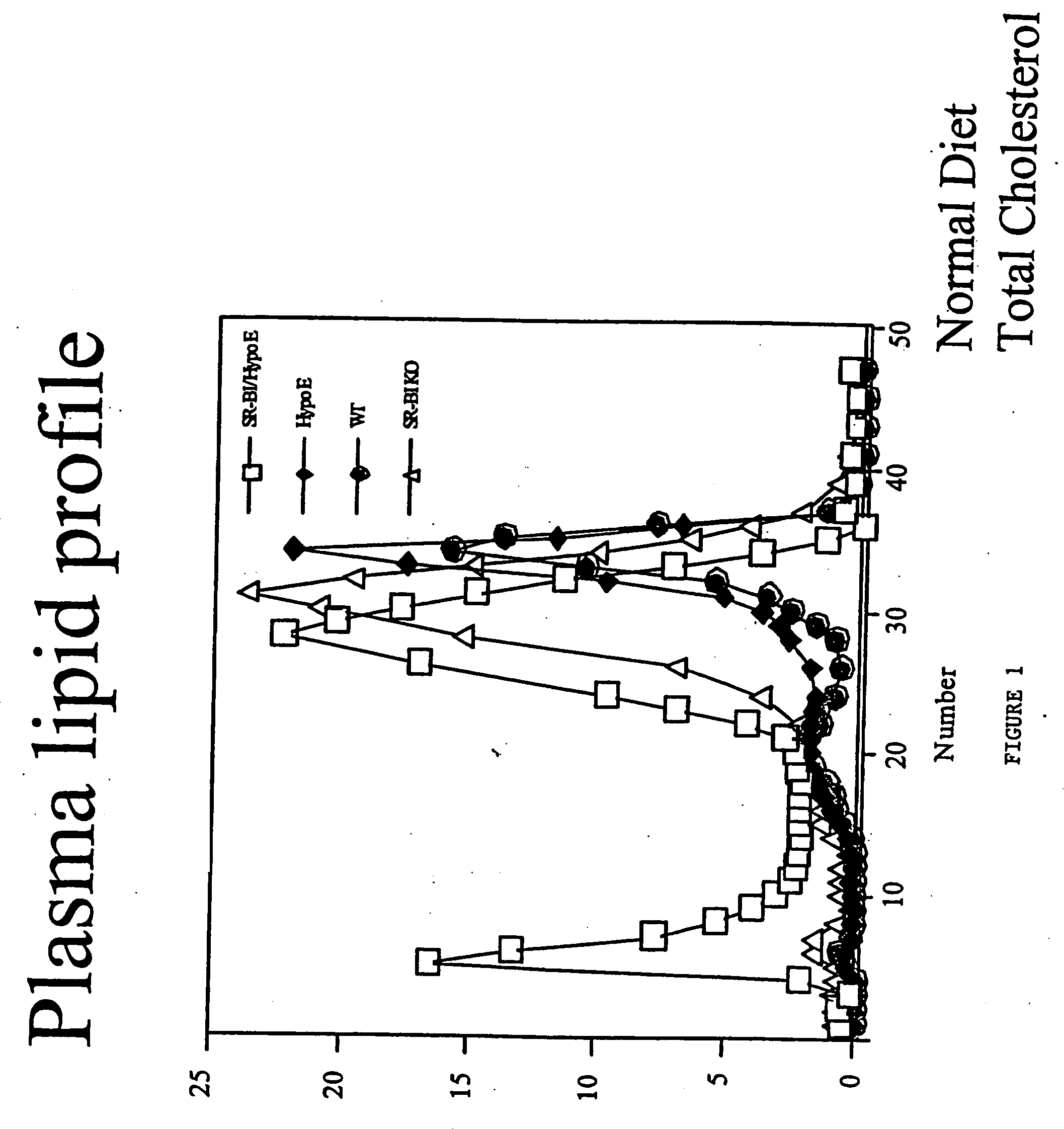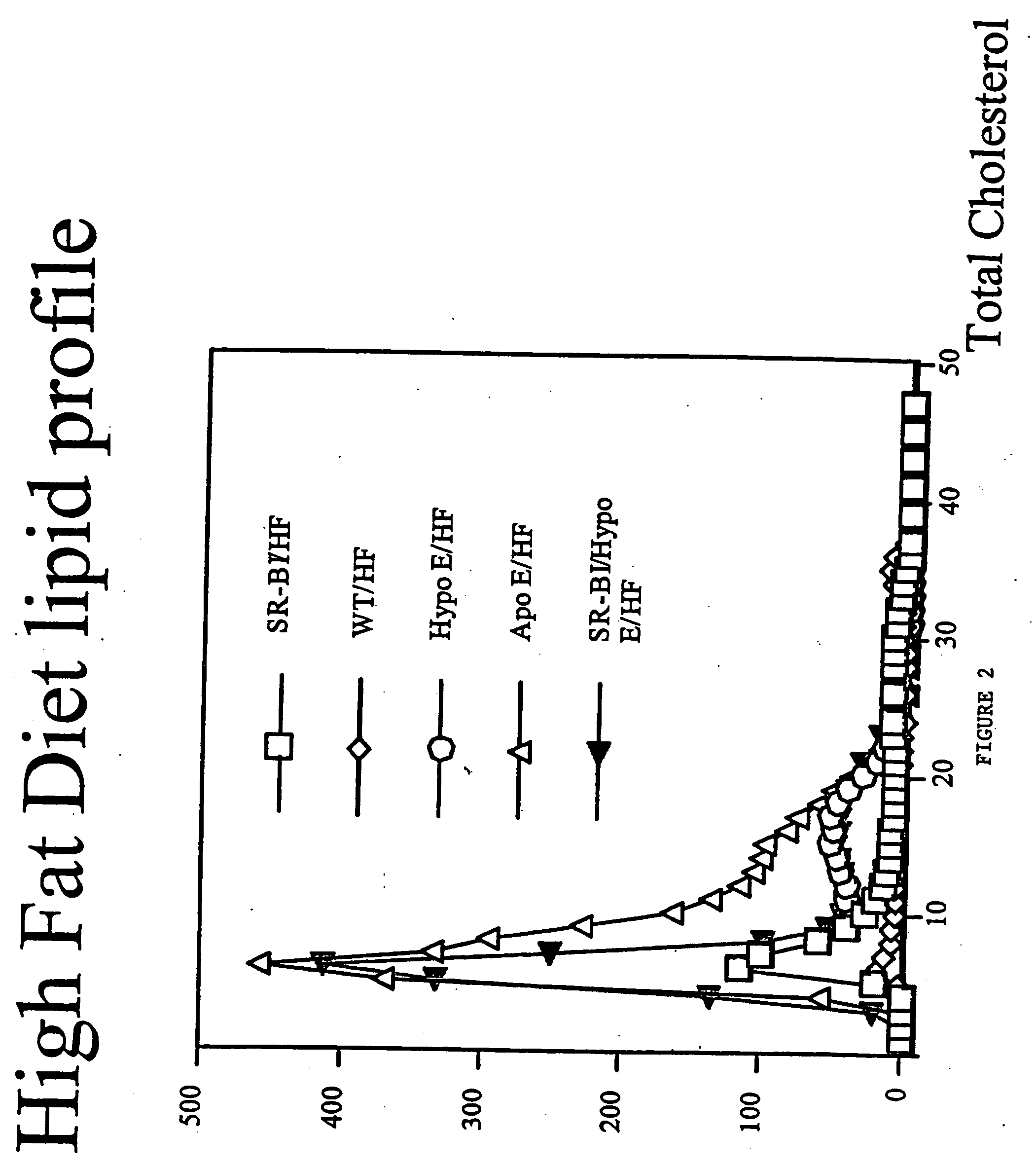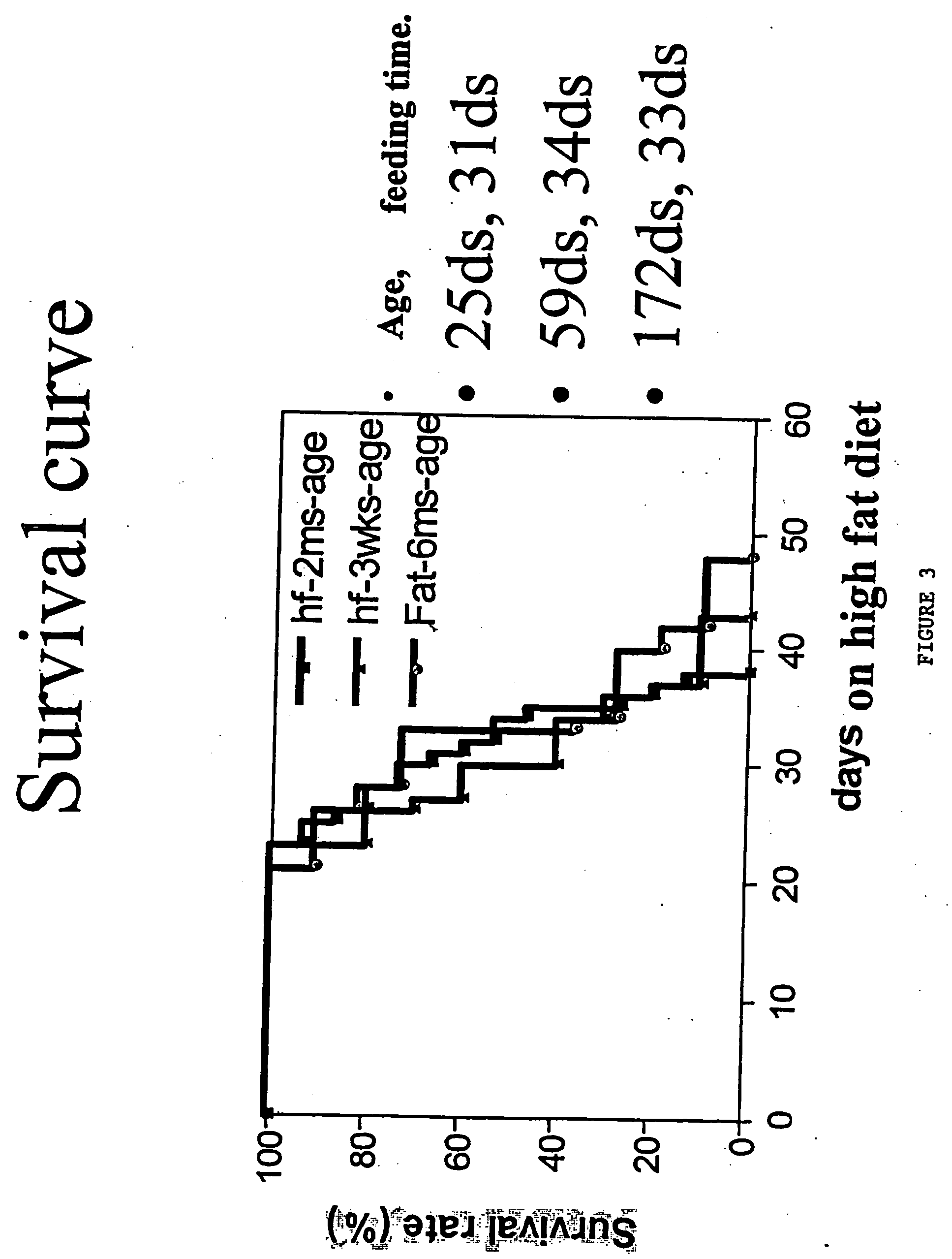Inducible heart attack animal model
- Summary
- Abstract
- Description
- Claims
- Application Information
AI Technical Summary
Problems solved by technology
Method used
Image
Examples
example 1
Production and Characterization of Combination Transgenic Animals which do not Express SR-BI and have Reduced ApoE Expression (hypoE)
[0071] Generation of SR-BI / hypoE mutant mice.
[0072] SR-BI / hypoE mice were generated by crossbreeding established SR-BI knockout mice with hypoE mice. Homozygous SR-BI knockout dams are infertile (Miettinen et al. (2001) J Clin Invest. 108(11):1717-22; Rigotti et al (2003) Endocr Rev. 24(3):357-87). It is therefore necessary to use an SR-BI knockout male crossing with a hypoE dam while also accounting for the infertility of female mice during crossbreeding. Alternatively, the cholesterol lowering drug probucol has been shown to restore fertility in the SR-BI knockout females and may be administered during the breeding protocol (Miettinen et al. 2001).
[0073] Characterization of Plasma Lipids and Apolipoproteins
[0074] Plasma lipids and apolipoproteins were assayed for wild type and SR-BI / hypoE mice and compared with hypoE, SR-BI− / − and ApoE− / − single ...
example 2
Manipulation of the Progress of CHD by Feeding Mice Which do not Express SR-BI and Have Reduced ApoE Expression (hypoE) Different High Fat Diets
[0080] SR-BI / hypo E mice were generated as described in Example 1. SR-BI / hypo E mice were fed a normal low fat chow diet, a high fat (HF) diet consisting of 7.5% cocoa butter, 15.8% fat, 1.25% cholesterol, and 0.5% sodium cholate, a NCA diet consisting of 7.5% cocoa butter, 15.8% fat, and 1.25% cholesterol, or a Western Diet (WD) diet consisting of 21.2% fat, and 0.2% total cholesterol.
[0081] Plasma lipids and apolipoproteins were assayed for SR-BI / hypoE mice when fed a normal low fat, low cholesterol diet, the HF diet, the NCA diet, or the WD diet. These data are summarized in Table 5.
TABLE 5Plasma lipid and apolipoprotein levels of SR-BI / hypo E mice on different high fat diets.RatioDietTCUCPLTGUC / TCUC + PLNormal (n = 19)1010 ± 237817 ± 188686 ± 93 42 ± 180.811 ± 0.0326.63 ± 1.7HF diet (n = 1)6630 ± 3371284 ± 274 976 ± 25372 ± 130.787 ±...
example 3
Survival of Mice Which do not Express SR-BI and Have Reduced ApoE Expression (hypoE) Depends on the Number of Animals Per Cage
[0083] SR-BI / hypo E mice were generated as described in Example 1. SR-BI / hypo E mice were fed a high fat (HF) diet consisting of 7.5% cocoa butter, 15.8% fat, 1.25% cholesterol, and 0.5% sodium cholate.
[0084] SR-BI / hypo E mice were housed as a group or single and survival was assessed after the animals were administered a HF diet. Animals were fed the normal or HF diet and monitored for survival. SR-BI / hypoE mice housed alone exhibit shorter survival times than mice housed as a group. Animals on the HF diet housed alone died within four weeks while animals on the HF diet housed as a group died within seven weeks. A 50% survival rate was observed at approximately 19 days for animals housed alone and approximately 30 days for animals housed as a group. This is shown in FIG. 6.
[0085] After 14 days on the HF diet, SR-BI / hypo E mice housed alone displayed eleva...
PUM
| Property | Measurement | Unit |
|---|---|---|
| internal diameter | aaaaa | aaaaa |
| electrical | aaaaa | aaaaa |
| electrical conductance | aaaaa | aaaaa |
Abstract
Description
Claims
Application Information
 Login to View More
Login to View More - R&D
- Intellectual Property
- Life Sciences
- Materials
- Tech Scout
- Unparalleled Data Quality
- Higher Quality Content
- 60% Fewer Hallucinations
Browse by: Latest US Patents, China's latest patents, Technical Efficacy Thesaurus, Application Domain, Technology Topic, Popular Technical Reports.
© 2025 PatSnap. All rights reserved.Legal|Privacy policy|Modern Slavery Act Transparency Statement|Sitemap|About US| Contact US: help@patsnap.com



